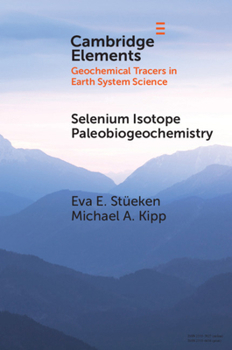Selenium Isotope Paleobiogeochemistry
The attraction of selenium isotopes as a paleoenvironmental tracer lies in the high redox potential of selenium oxyanions (SeIV and SeVI), the dominant species in the modern ocean. The largest isotopic fractionations occur during oxyanion reduction, which makes selenium isotopes a sensitive proxy for the redox evolution of our planet. As a case study we review existing data from the Neoarchean and Paleoproterozoic, which show that significant isotopic...
Format:Paperback
Language:English
ISBN:110874916X
ISBN13:9781108749169
Release Date:October 2020
Publisher:Cambridge University Press
Length:30 Pages
Weight:0.12 lbs.
Dimensions:0.1" x 6.0" x 9.0"
Customer Reviews
0 rating





